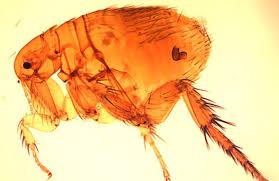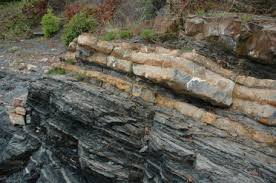Today’s Current Affairs: 14th October 2024 for UPSC IAS exams, State PSC exams, SSC CGL, State SSC, RRB, Railways, Banking Exam & IBPS, etc
Table of Contents
Alkanes : Study

Researchers have developed a novel method to activate alkanes using confined chiral Brønsted acids, significantly enhancing the efficiency and selectivity of chemical reactions.
- Alkanes are organic compounds that consist entirely of single-bonded carbon and hydrogen atoms and lack any other functional groups.
- Alkanes have the general formula CnH2n + 2 (where n is an integer).
- Alkanes can be subdivided into three groups: linear straight-chain alkanes,branched alkanes, and cycloalkanes.
- They show little chemical affinity for other substances and are chemically inert to most laboratory reagents.
- They are also relatively inert biologically and are not often involved in the chemistry of living organisms.
- Alkanes do, however, react with oxygen, halogens, and a few other substances under appropriate conditions.
- Reaction with oxygen occurs during combustion in an engine or furnace when an alkane is used as a fuel.
- Carbon dioxide and water are formed as products, and a large amount of heat is released.
- They are commercially very important, being the principal constituent of gasoline and lubricating oils and are extensively employed in organic chemistry.
- Examples of alkane include methane, ethane, propane, butane, etc.
Dragon drones : In News

A deadly new weapon has taken to the skies in the Russia-Ukraine war. Both sides have posted visuals of drones appearing to rain down fire — earning this weapon the moniker of “dragon drone”.
- Dragon drones essentially release a substance called thermite — a mixture of aluminium and iron oxide — developed a century ago to weld railroad tracks.
- When ignited (usually with the help of an electrical fuse), thermite triggers a self-sustaining reaction that is quite difficult to extinguish.
- It can burn through almost anything, from clothes to trees to military-grade vehicles, and can even burn underwater.
- On humans, it causes severe, possibly fatal, burns and bone damage.
- Combining thermite with high-precision drones that can bypass traditional defences makes dragon drones ‘highly effective’ and ‘dangerous’
- In recent times these dragon drones are believed to have been first deployed in the Russia-Ukraine war around September.
International regulation - The use of thermite in war is not prohibited under international law.
- However, the use of such incendiary weapons against civilian targets is barred under the Convention on Certain Conventional Weapons — Cold War-era guidance issued under the auspices of the United Nations.
X-Band Radar:

After recent devastating floods and landslides in Kerala’s Wayanad district, the Union Ministry of Earth Sciences approved an X-band radar to be installed in the district.
- An X-band radar is a radar that emits radiation in the X-band of the electromagnetic spectrum: 8-12 GHz, corresponding to wavelengths of around 2-4 cm.
- The smaller wavelengths allow the radar to produce images of higher resolution.
- However, the greater the frequency of some radiation, the faster it will be attenuated.
- The new radar is expected to be able to monitor the movements of particles, such as soil, to inform landslide warnings.
- The device will also perform high temporal sampling, that is, rapidly sample its environs, allowing it to spot particle movements happening in shorter spans of time.
- These radars are typically used for studies about cloud development and light precipitation due to their ability to detect tiny water particles and snow.
- Radar is short for ‘radio detection and ranging’.
- The device uses radio waves to determine the distance, velocity and physical characteristics of objects around the device.
Rare Diseases : In News

The Delhi High Court issued directions aimed at improving the availability of so-called “orphan drugs”, which are medications used to treat “rare diseases”.
- Rare Diseases is a health condition of low prevalence that affects a small number of people compared with other prevalent diseases in the general population.
- There are 7,000-8,000 classified rare diseases, but less than 5% have therapies available to treat them.
- A condition is considered to be a rare disease if its prevalence is less than one case per 1,000 population.
- In India, rare diseases are categorised into three groups based on the nature and complexity of available treatment options.
- Group 1 includes diseases that can be treated with a one-time curative procedure.
- Group 2 diseases require long-term or lifelong treatment which are relatively less costly and have shown documented benefits, but patients need regular check-ups.
- Group 3 diseases are those for which effective treatments are available, but they are expensive and must often continue lifelong.
- There are challenges in selecting the right beneficiaries for these treatments.
Murine Typhus:

A 75-year-old man from Kerala who recently travelled to Vietnam and Cambodia was diagnosed with the bacterial disease murine typhus.
- Murine Typhus is an infectious disease caused by the flea-borne bacteria Rickettsia typhi.
- It is transmitted to humans through the bites of infected fleas
- It is also known as endemic typhus, flea-borne typhus or flea-borne spotted fever.
- Rodents like rats, mice and mongoose, are known to be reservoirs of the disease.
- The disease-carrying fleas can also live on other small mammals, including pets such as cats and dogs. Once a flea is infected, it can spread the disease for the rest of its life.
- Transmission can also happen through exposure of mucous membranes to infected flea faeces.
- It is spread when infected flea faeces come into contact with cuts or scrapes in the skin.
- Murine typhus is not spread from one person to another, or from person to fleas.
- The disease has been reported in coastal tropical and subtropical regions, where rats are prevalent.
- In India, cases of murine typhus have been reported in the Northeast, Madhya Pradesh and Kashmir.
- The symptoms usually appear seven to 14 days after the exposure and include fever, headaches, body aches, joint pains, nausea, vomiting, and stomach aches.
Aurora Borealis : In News

The night sky was illuminated recently by the northern lights, or aurora borealis, visible in parts of the world including the United States, Canada, the United Kingdom, Germany, and even Hanle village in Ladakh.
- An aurora is a natural light display in Earth’s sky, predominantly seen in high-latitude regions (around the Arctic and Antarctic).
- Auroras are caused by the interaction of energetic particles (electrons and protons) of the solar wind with atoms of the upper atmosphere.
- Auroras display dynamic patterns of brilliant lights that appear as curtains, rays, spirals, or dynamic flickers covering the entire sky.
- They are also commonly known as the northern lights (aurora borealis) or southern lights (aurora australis).
- Aurora Borealis called the Northern Lights, it occurs in the northern hemisphere, predominantly in regions near the Arctic Circle.
- This includes countries like Norway, Sweden, Finland, Iceland, Canada, and Alaska.
- The northern lights result from charged particles from the sun, mainly electrons and protons, colliding with the Earth’s magnetosphere and interacting with gases in the Earth’s atmosphere.
- These collisions produce colourful displays of light, primarily in green, red and purple hues.\
- The bright colors of the northern lights are dictated by the chemical composition of Earth’s atmosphere.
Komodo Dragon:

The Indonesian government is proposing partial closures of Komodo National Park in 2025 to ease the strain from the increasing number of visitors drawn to its unique ecosystem.
- Komodo Dragon is the largest extant lizard species.
- Scientific Name: Varanus komodoensis
- It is a monitor lizard of the family Varanidae.
- It occurs on Komodo Island and a few neighbouring islands of the Lesser Sunda Islands of Indonesia.
- The lizard grows to 3 metres (10 feet) in total length and attains a weight of about 135 kg (about 300 pounds).
- Their tongues are yellow and forked.
- Adults are an almost-uniform stone color with distinct, large scales, while juveniles may display a more vibrant color and pattern.
- Although most young are produced through sexual reproduction, females that are isolated from males sometimes produce offspring through parthenogenesis.
- They are well-known for their venomous bite, which contains toxins that cause massive blood loss and shock in their prey.
- They can run swiftly and occasionally attack and kill human beings.
- Lifespan: 30 years
- Conservation Status: IUCN Red List: Endangered
Shale Gas:

A recent study by scientists from Birbal Sahni Institution of Palaeosciences, Lucknow (BSIP) indicated significant shale gas generation potential in the eastern South Karanpura coalfield in the Ramgarh district of Jharkhand.
- Shale gas is natural gas found in shale deposits, where it is trapped in microscopic or submicroscopic pores.
- This natural gas is a mixture of naturally occurring hydrocarbon gases produced from the decomposition of organic matter (plant and animal remains).
- Typically, shale gas consists of 70 to 90 per cent methane (CH4), the main hydrocarbon target for exploration companies.
- It is extracted by a commonly known method called Hydraulic fracturing.
- In this method deep holes are drilled down into the shale rock, followed by horizontal drilling to access more of the gas, as shale reserves are typically distributed horizontally rather than vertically.
- Fracking fluids containing sand, water and chemicals are then pumped at high pressure into the drilled holes to open up fractures in the rock, enabling the trapped gas to flow into collection wells. From there it is piped away for commercial use.
- India holds promising reserves of Shale Gas & Oil resources and the following sedimentary basins are considered prospective from a Shale oil and gas point of view:
- Cambay Basin, Gondwana Basin, KG Basin, Cauvery Basin, Indo-Gangetic Basin and Assam & Assam-Arakan Basin
- This is the gas used for generating electricity and for domestic heating and cooking.
Cabinet approvals:
The Union Cabinet chaired by Narendra Modi, Prime Minister (PM) of India, has approved the following proposals for, Development of the world-class National Maritime Heritage Complex (NMHC) by Ministry of Ports, Shipping & Waterways (MoPSW) at Lothal, Gujarat, to be executed in two phases. Construction of 2,280 km of roads in Rajasthan and Punjab, with an investment of Rs 4,406 crore. Continuation of the universal supply of Fortified Rice Kernels (FRK) under various Central Government schemes, including Pradhan Mantri Garib Kalyan Anna Yojana (PMGKAY), from July 2024 to December 2028, at a cost of Rs 17,082 crore.
Union Health Minister JP Nadda Addressed 77th Session of Regional Committee of WHO South East Asia Region:
On 7th October 2024, Union Minister Jagat Prakash Nadda, Ministry of Health and Family Welfare (MoH&FW), addressed the 77th session of World Health Organisation (WHO) Southeast Asia Region (SEARO), one of the 6 WHO regions, in New Delhi, Delhi. The 77th session of the Regional Committee (RC77) for Southeast Asia was held from 7th to 9th October, 2024.
Pritpal Kaur selected as ‘2024 IACP 40 Under 40’ for exemplifying leadership and law enforcement:
The United States of America(USA) based International Association of Chiefs of Police(IACP) selected an Indian Police Service (IPS) officer Pritpal Kaur, Superintendent of Police (SP) of the Phek district(Nagaland) for ‘2024 IACP 40 Under 40’ award. She is the only Indian selected for this year award. Pritpal Kaur is among 40 police officers selected from 6 countries around the world for the award.
Secretary Gina Raimondo and Piyush Goyal Co-Chair 6th U.S.-India Commercial Dialogue Meeting:
Union Minister Piyush Goyal, Ministry of Commerce and Industry (MoCI) and Gina Raimondo, United States (US) Secretary of Commerce, co-chaired the 6th consecutive India-US Commercial Dialogue held in the US Department of Commerce, in Washington D.C., the United States of America (USA). Piyush Goyal was on a visit to the USA from 30th September 2024 to 3rd October 2024 at the invitation of Gina Raimondo.
Bihar CM Nitish Kumar unveils Logo, Mascot for Women’s Asian Champions Trophy-2024:
Nitish Kumar, Chief Minister (CM) of Bihar, unveiled the Logo and mascot named “Gudiya” of the Women’s Asian Champions Trophy-2024 which is scheduled to be held from 11th to 20th November 2024 in Rajgir, Bihar. The Bihar cabinet has scanctioned Rs 10 crore to Hockey India for hosting the 2024 Championship.




